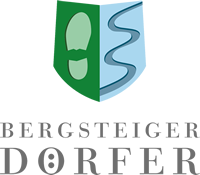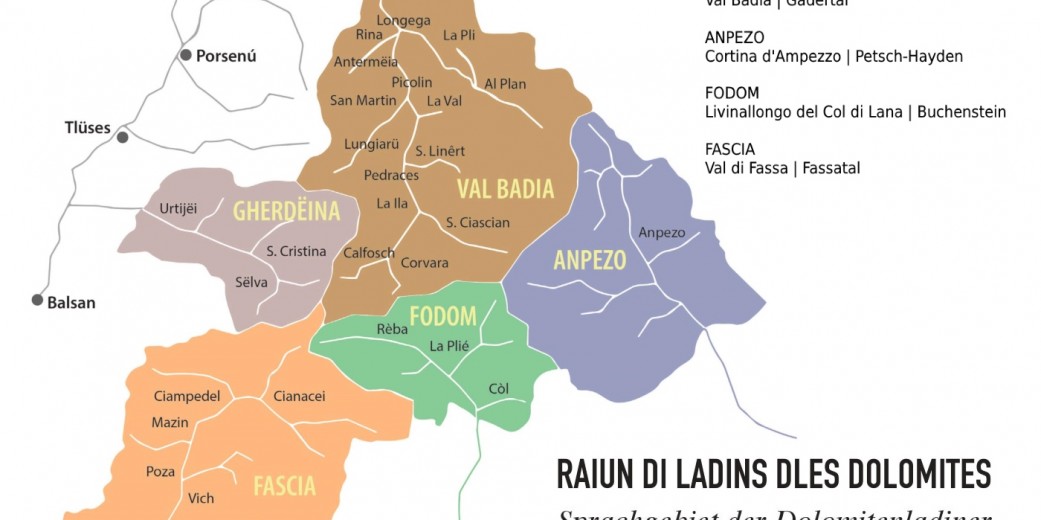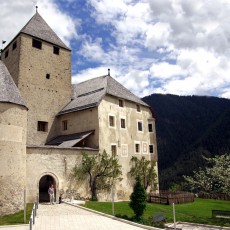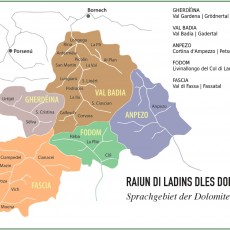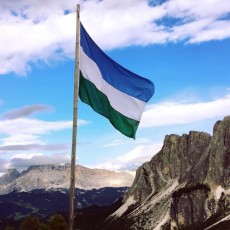Language as a part of identity
Ladin, also known as Romansch, is essentially a Romance language and, as such, related to French, Italian, Spanish and so on. The language originated in the period when the Romans integrated the region along the main Alpine crest into their Empire. Over the following centuries, the indigenous pre-Roman population adopted the vocabulary of the “folk Latin” of Roman soldiers, civil servants and traders into their language and over time this adopted Latin, influenced by neighbours to the north and south, evolved to become Ladin.
Originally, there was a closed Ladin area in terms of language, stretching from the Danube in the north to Lake Garda in the south and from the St. Gotthard Pass in the west to Trieste in the east. During the period of migration, however, this language belt became narrower, and a part of the Ladin-speaking population became assimilated. This resulted in a divide between the Ladin people from the Dolomites with those in Grison and Friuli.
The roughly 30,000 Ladin people from the Dolomites are united not only by their language but also by the breathtaking Dolomite landscape. The area comprises the Sella massif beside the Gadertal Valley in South Tyrol and also the Grödental Valley and the Fassa Valley in Trentino, and Buchenstein and Cortina d’ Ampezzo in the province of Belluno (Veneto).
While Ladin was formerly considered to be a dialect, it is today, alongside German and Italian, the third national language of Italy and a compulsory subject in the schools of the Ladin villages in the Gadertal and Grödental Valleys. These measures have ensured that language and culture will not die out. The language is also supported through a number of publications and regular radio and TV broadcasts.
Ciastel de Tor / Castle Thurn
Ciastel de Tor/Castle Thurn is inseparable from the history of Lungiarü. Given that the Bishopric of Brixen was both the landowner and judge of the “Thurn an der Gader” court, the Campill Valley was also subject to its jurisdiction. The possession and assets were administrated by the episcopal clerk of the Ciastel de Tor/Schloss Thurn court.
The castle is located on a small hill above San Martin de Tor/St. Martin in Thurn and is held to be the most historic, symbolic building in the Gadertal Valley. The castle complex, formerly the administrative centre of the Court, dates back to the 12th century, and its history is revealed through a variety of Romanesque, Gothic, Baroque and modern features. Upon secularisation in 1803, the castle fell under the private ownership of two farming families from St. Martin, and their descendants continued to live there until the year 2000. The entire castle was purchased by the Province of South Tyrol in 1997, and today it houses the Ladin Museum, the regional museum for the culture and history of the Ladin ethnic group.
